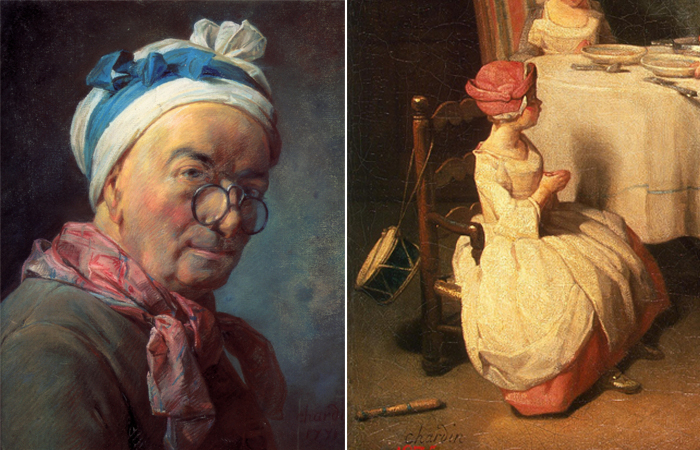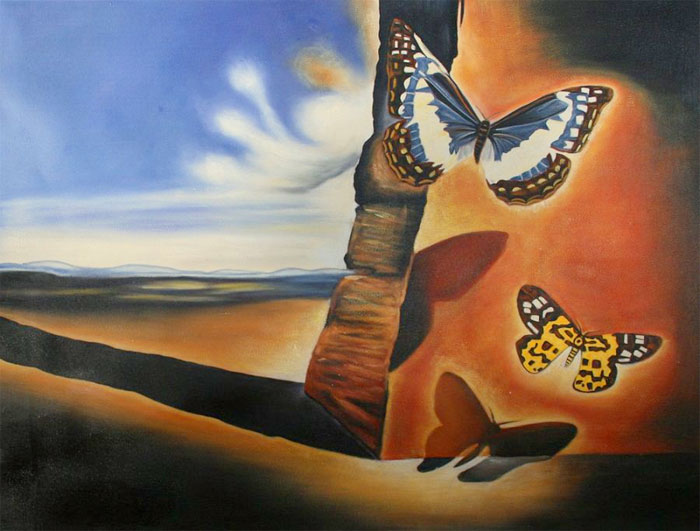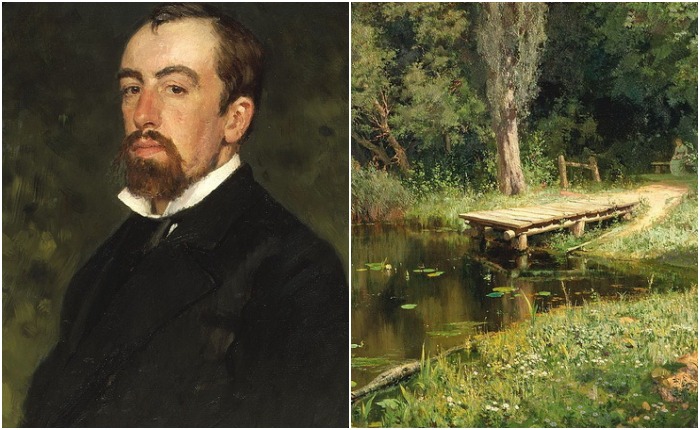Vincent Laurence van der Winne and his still lifes vanitas: where did the artist hide his portrait?
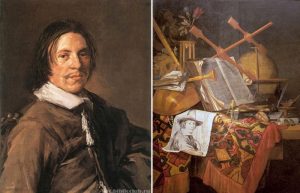 Vincent Laurence van der Winne (1628–1702) is a Dutch artist and writer. Initially, van der Winne was engaged in weaving, but then, sensing a craving for fine art, he decided to focus on painting. Especially popular are the still lifes of this master, in which he hid his own portrait. Der Winne was the only (according to available historical data) student of Frans Hals, the artist of the Golden Age of Holland, who actually painted his portrait in 1660.
Vincent Laurence van der Winne (1628–1702) is a Dutch artist and writer. Initially, van der Winne was engaged in weaving, but then, sensing a craving for fine art, he decided to focus on painting. Especially popular are the still lifes of this master, in which he hid his own portrait. Der Winne was the only (according to available historical data) student of Frans Hals, the artist of the Golden Age of Holland, who actually painted his portrait in 1660.
Van der Vinne’s paintings are mainly vanitas still lifes and genre scenes, many of which include a portrait paper sketch of the painter himself. His style was later copied by Evert Collier, Peter van Eisen and Barent van Eisen. Continue reading
Secrets of self-portraits of famous artists: Reflection in the mirror, portrait-bacon and other oddities
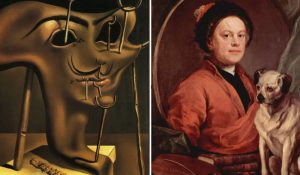 Self-portrait in most cases is an instrument of narcissism, an attempt to leave your image in eternity. But if a genius takes up the matter, his image on canvas can turn into a real masterpiece, which not only perpetuates the appearance of the master, but also puzzles, surprises, fascinates the viewer. For centuries, some of these self-portraits have been knocked out of the familiar notion of this genre, while not losing either their fans or the attention of researchers.
Self-portrait in most cases is an instrument of narcissism, an attempt to leave your image in eternity. But if a genius takes up the matter, his image on canvas can turn into a real masterpiece, which not only perpetuates the appearance of the master, but also puzzles, surprises, fascinates the viewer. For centuries, some of these self-portraits have been knocked out of the familiar notion of this genre, while not losing either their fans or the attention of researchers.
Jan van Eyck, “Portrait of the Arnolfini Couple”
It is from the Renaissance that the development of the self-portrait genre begins – an interest in a person and a person naturally generated the artist’s attention to his own image. But self-portraits in their traditional, academic form did not appear immediately. At first, the masters who wanted to portray themselves in the picture either inscribed their figure in the composition as one of the secondary characters, or became “their own sitters” and the main characters of their works. Continue reading
Creativity for the Mentally Ill: A Book That Changed History
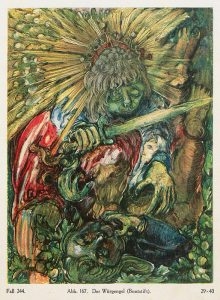 Sometimes you can hear such a statement that in order to create a masterpiece, you must be either a genius or a madman. Tarragon – the hero of the play “Waiting for Godot” by Samuel Becket, said that “we are all born crazy. And some of them remain … “Yes, and where is the line that separates genius from madness? In 1922, a German psychiatrist published a book in which he showed the work of the mentally ill, and this book made a splash among both the psychiatric society and artists.
Sometimes you can hear such a statement that in order to create a masterpiece, you must be either a genius or a madman. Tarragon – the hero of the play “Waiting for Godot” by Samuel Becket, said that “we are all born crazy. And some of them remain … “Yes, and where is the line that separates genius from madness? In 1922, a German psychiatrist published a book in which he showed the work of the mentally ill, and this book made a splash among both the psychiatric society and artists.
The fact that some very talented, and even brilliant people suffered from various mental disorders is not news. So, it is known that Gogol suffered from manic-depressive psychosis, and Leo Tolstoy often had bouts of depression that alternated with numerous phobias. Maxim Gorky was prone to vagrancy and pyromania, and some experts insist that Lermontov suffered from a form of schizophrenia that he inherited from his mother.
Mental suffering – whether they are caused by objective life difficulties or real mental disorders, really somehow affect people’s creativity. And the German psychiatrist Hans Prinzhorn undertook to investigate this influence. Continue reading
Unknown portrait of Da Vinci’s brush: Did the great master really write “Princess Leonardo” and whom he portrayed
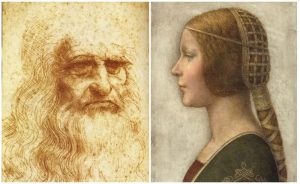 It may seem that the legacy of Leonardo da Vinci has many paintings – this artist, who died five hundred years ago, is mentioned too much and too often in the modern world. In fact, only one and a half dozen paintings by da Vinci and a few more works are known, whose belonging to Leonardo’s brush is only supposed. Therefore, any loss of the work of a great artist, as well as the sudden discovery of previously unknown, becomes a sensational event, affecting the history of fine art itself. Moreover, each such episode is reminiscent of a detective story, where there are victims, and criminals, and the hero revealing the secret, and most importantly – the priceless masterpiece of Leonardo.
It may seem that the legacy of Leonardo da Vinci has many paintings – this artist, who died five hundred years ago, is mentioned too much and too often in the modern world. In fact, only one and a half dozen paintings by da Vinci and a few more works are known, whose belonging to Leonardo’s brush is only supposed. Therefore, any loss of the work of a great artist, as well as the sudden discovery of previously unknown, becomes a sensational event, affecting the history of fine art itself. Moreover, each such episode is reminiscent of a detective story, where there are victims, and criminals, and the hero revealing the secret, and most importantly – the priceless masterpiece of Leonardo.
How at the end of the 20th century another Renaissance masterpiece was discovered. Continue reading
How Pavel Tretyakov competed with the emperor to create the most famous art gallery in Moscow
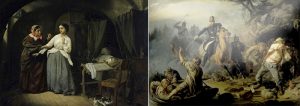 Before the revolution, patronage of the arts was considered not only charitable, but also beneficial for the donor himself, and the point here was not taxes at all. According to the ideas of merchants in the old days, this activity avoided the terrible temptation – the power of money. Most often, wealthy industrialists became patrons of shelters, hospitals, and educational institutions. At first, the partners and competitors laughed at the Tretyakov brothers’ passion for painting, but time, of course, put everything in its place.
Before the revolution, patronage of the arts was considered not only charitable, but also beneficial for the donor himself, and the point here was not taxes at all. According to the ideas of merchants in the old days, this activity avoided the terrible temptation – the power of money. Most often, wealthy industrialists became patrons of shelters, hospitals, and educational institutions. At first, the partners and competitors laughed at the Tretyakov brothers’ passion for painting, but time, of course, put everything in its place.
Pavel and Sergey Tretyakov were the eldest children in a well-known merchant family. This dynasty of industrialists has flourished since the 18th century, and for several generations from the retail of buttons, it has been able to grow to manufacturers – the family owned paper dyeing and finishing industries. I must say that, despite the huge investment in art, by the time of his death, the state of Pavel Tretyakov was estimated at 3.8 million rubles. Continue reading
